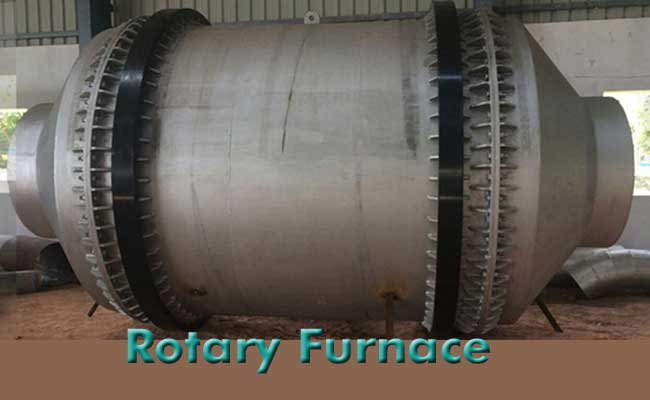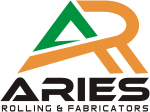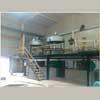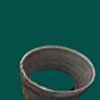
Features
- It has a high production capacity
- The process can be extended to the blast furnace, baghouse powder, refining dross, and lead ore
- Near perfect extraction of lead
- Eco-friendly operation
- Operating temperature 1000-1200 Degree C
Rotary Furnace
Unlike stationary furnaces, Rotary Furnaces adds a degree of motion on itself as it rotates on its axis while heating the substances inside. The rotation serves many useful purposes, as it will result in better mixing of the substances as well as a result in uniform heating. When it comes to controlling the furnace, it comes with a host of sensors to give the user precise data on its working. Our Rotary Furnaces comes with modern sensors that give accurate data on each process. The easy to navigate control panel ensures that the worker is always in control.
The construction of the Alloy pot uses a refractory lining on the inside, and mild steel is covering with riding rings attached to it. The assembly is then attached to a system that houses the control panel, driver motor, and furnace. The Alloy Pot comes with a Thermocouple probe sensor for controlling & maintaining furnace temperature.
Raw materials required:
- Lead Acid Battery Scrap
- Lead dross
- Lead concentrate
- Lead Scrap
- Lead ash and other lead-bearing scraps
Working temperature: 1000-1200 Degree C
Smelting: The Raw materials mixed with soda ash, iron turnings and charcoal are used for smelting.
End products: Lead blocks
The furnace is loaded with the above raw materials along with iron turnings, soda ash, and charcoal. The melted lead is procured as lead blocks. Slag is separated to further extract reminiscent lead. The whole system uses 3-stage pollution control to keep emissions at bay.
Industrial applications include smelting of lead sourced from Lead Acid Battery Scrap, Lead Scrap, Lead concentrate, Lead dross, Lead ash and other lead-bearing scraps.


